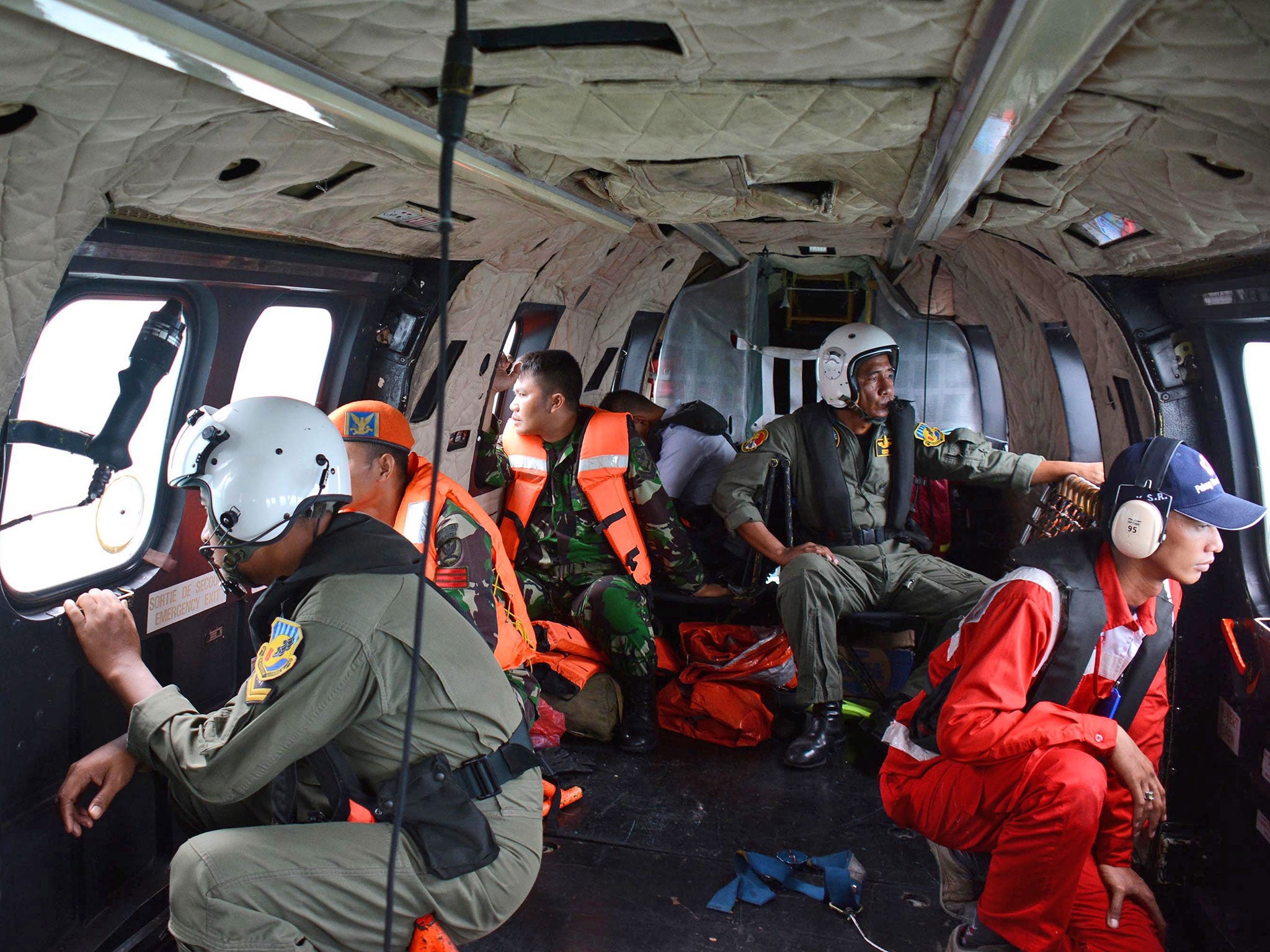AirAsia flight QZ8501: Aircraft's behaviour before crash 'on the edge of logic', according to expert
Only eight bodies have been recovered from the crash

Your support helps us to tell the story
From reproductive rights to climate change to Big Tech, The Independent is on the ground when the story is developing. Whether it's investigating the financials of Elon Musk's pro-Trump PAC or producing our latest documentary, 'The A Word', which shines a light on the American women fighting for reproductive rights, we know how important it is to parse out the facts from the messaging.
At such a critical moment in US history, we need reporters on the ground. Your donation allows us to keep sending journalists to speak to both sides of the story.
The Independent is trusted by Americans across the entire political spectrum. And unlike many other quality news outlets, we choose not to lock Americans out of our reporting and analysis with paywalls. We believe quality journalism should be available to everyone, paid for by those who can afford it.
Your support makes all the difference.AirAsia flight QZ8501, which crashed into the Java Sea on Sunday, behaved in ways “bordering on the edge of logic”, according to an Indonesian aviation expert.
Comments from various experts come as France's crash investigation agency said its specialist black box search team and equipment would arrive early Friday at the search area for the AirAsia flight. The black box will reveal what happened in the final moments of the crash, as the truth behind the cause is still unknown.
Only eight victims have been recovered from the Java Sea despite a a brief window of clear conditions on Thursday. Officials say 162 people died the plane crashed on route from Surabaya to Singapore on Sunday.
Indonesian aviation analyst Gerry Soejatman believes the aircraft rose up as fast as a fighter jet and then dropped back into the ocean almost vertically into the water.
And the extreme weather which Airbus 320-200 encountered meant the pilots were helpless to save the passengers and crew on-board, Soejatman told Fairfax media after he examined figures leaked from the official air crash investigation team.
He said “It’s really hard to comprehend [the plane acted in a way] bordering on the edge of logic,” as it plunged into the water “‘like a piece of metal being thrown down.”
Mr Soejatman believes the crash occurred because the aircraft was caught in a severe updraft, followed by an equally severe ground draft, with the leaked figures showing that it climbed at a staggering rate of 6000ft to 9000ft per minute.
The aircraft then fell at 11,000ft a minute, with bursts of up to 24,000ft – in marked contrast to regular circumstances, when a plane would climb between 1000ft to 1500ft on a sustained basis, gaining 3000ft in a burst.
“You can’t do that at altitude in an Airbus 320 with pilot action,” he argued.
In contrast, aviation expert Peter Marosszeky, from the University of NSW, told the Sydney Morning Herald that the extremely low speed of the aircraft’s descent - as low as 61 knots - would suggest the plane was heading almost straight down, explaining why it has been found in water just 10km from its last point of radar contact.
Mr Marosszeky surmised that a climb rate of at least 6000ft a minute would indicate a “severe weather event,” because that rate of climb was a ‘domain for jet fighters.’
But both experts agree that the jet plunged into the water almost vertically because of a freak weather pattern that placed it under extraordinary force.
Meanwhile, Dudi Sudibyo, a senior editor of aviation magazine Angkasa instead claimed that the pilot managed to land on the sea before the craft was overwhelmed, the Mirror reported.
He suggested the plane landed safely as a heavy impact would have set off emergency locator transmitters on board – but there is no evidence this happened.
The craft was then swamped before sinking below the waves due to the stormy weather, he claimed.
Earlier in the week, AirAsia chief executive Tony Fernandes suggested the jet had encountered "very unique weather” and suggested climate change may be making flights more risky, particularly in the tropics.
Join our commenting forum
Join thought-provoking conversations, follow other Independent readers and see their replies
Comments